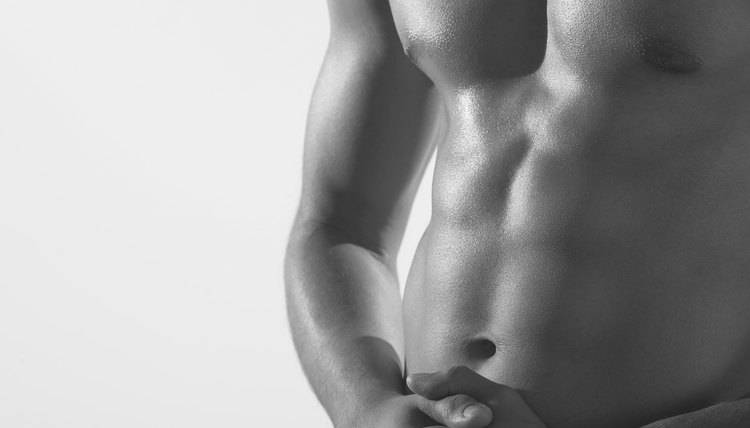What Does High to Low Woodchops Work?

The name "woodchop" might sound as though you're being sent to the woods to do chores. Although you aren't doing chores when performing this exercise, you will be working. The woodchop is an abdominal strengthening movement you perform from a kneeling or standing position. It uses weighted resistance in the form of a medicine ball, a dumbbell or a cable machine.
Woodchop
The woodchop motion is swinging a weight on an angle across the front of your body. For example, begin holding the weight over and slightly behind your left shoulder with your arms straight. Tighten your stomach by pulling your navel toward your spine. From this lifted position, control the speed as you slowly lower the weight to your right hip. Whether you use a medicine ball, a cable handle, or a dumbbell, hold the resistance between both hands. You may kneel on your right knee with your left foot on the floor in front of you, or may stand with your feet positioned at shoulder-distance apart. The exercise repeats from the right shoulder to the left hip for equal training on both sides.
Abdominals
Your abdominal muscles are the target group for the woodchop exercise. When you flatten your stomach at the beginning of the exercise, your transverse abdominis contracts. The TA is positioned similar to a corset around the inside of your abdomen. It is the deepest layer of muscle tissue underneath the rectus abdominis. The RA is positioned between your ribs and your pelvis bone. When you shorten the distance between your ribs and your hips, when you lower the ball toward your hip, the RA contracts.
Obliques
Your obliques are also part of your abdominal muscles. The external obliques are on the sides of your abdomen and are positioned similar to placing your hands in your back pockets. The internal obliques run diagonally opposite the external obliques similar to placing your hands in your front pockets. The obliques assist the rectus abdominis in core movements. When you woodchop from the left to the right, your left external oblique and your right internal oblique contract.
Stabilizers
To perform a woodchop, your body uses muscles to stabilize your position. Your shoulders, the deltoids, hold the weight lifted. Your back, the latissimus dorsi, contracts as you lower the weight. Your backside, the gluteus, remains contracted to keep your hips from rotating as the weight twists to the side.
References
- American Council on Exercise: Half-Kneeling Wood Chop
- Bodybuilding.com: Standing Cable Wood Chop
- "Manual of Structural Kinesiology"; Clem W. Thompson
Writer Bio
A mother of two and passionate fitness presenter, Lisa M. Wolfe had her first fitness article published in 2001. She is the author of six fitness books and holds an Associate of Arts in exercise science from Oakland Community College. When not writing, Wolfe is hula-hooping, kayaking, walking or cycling.
